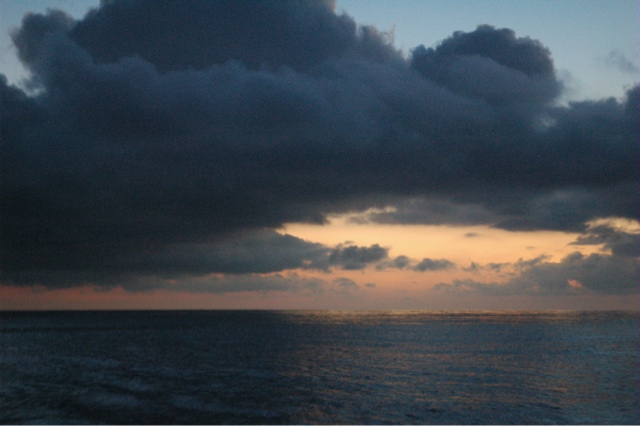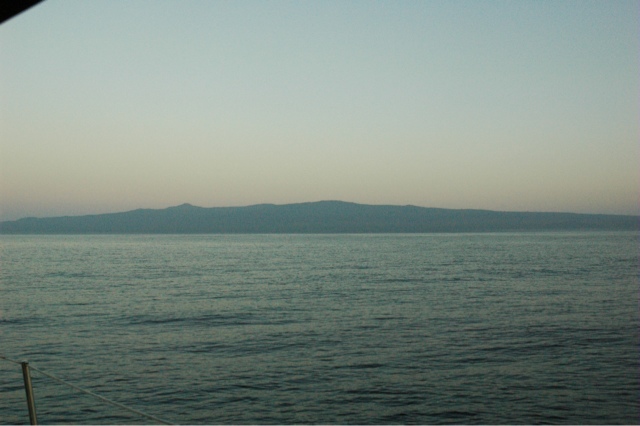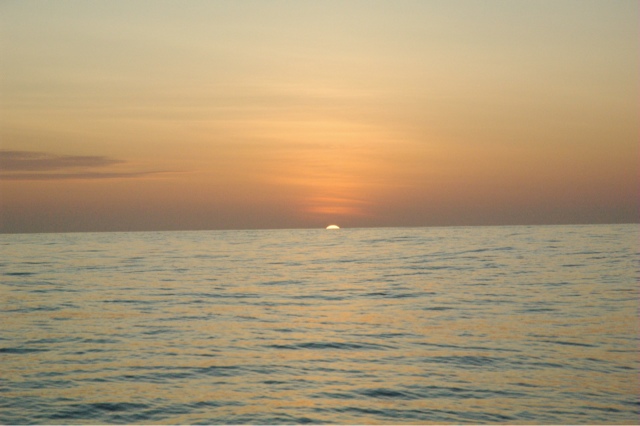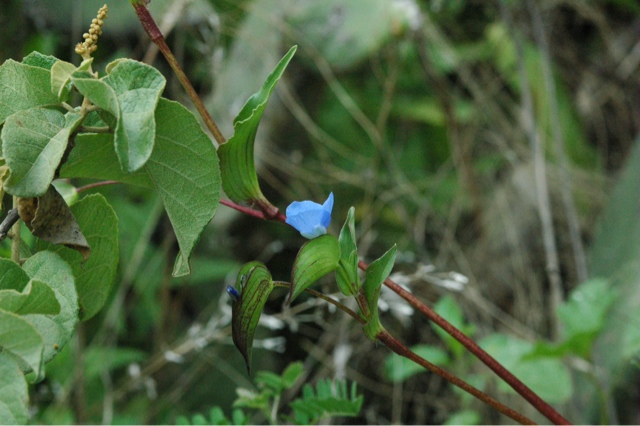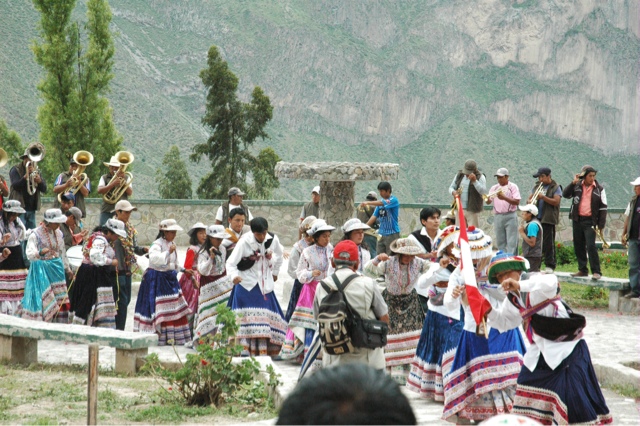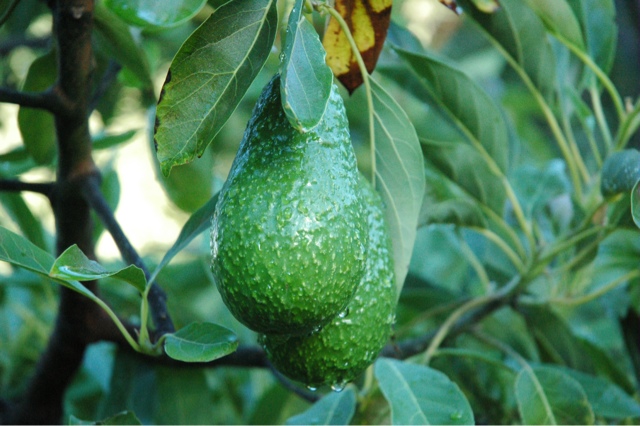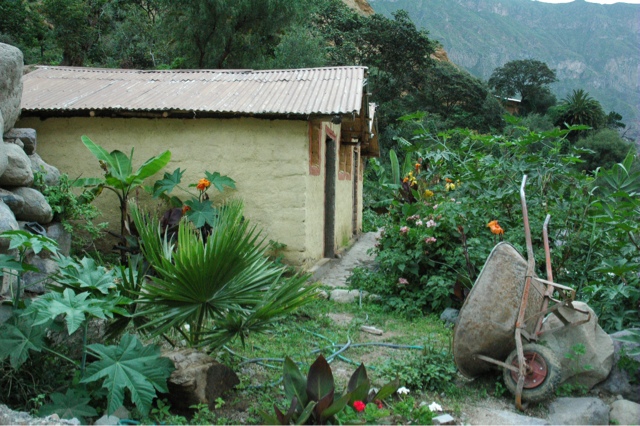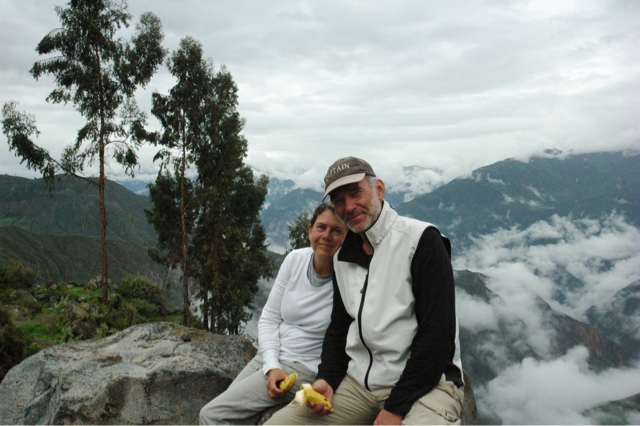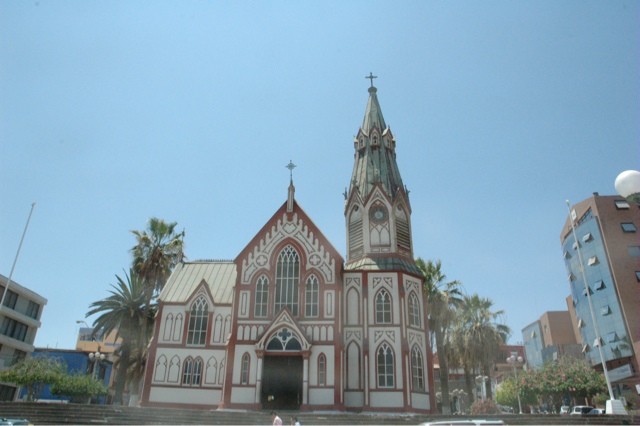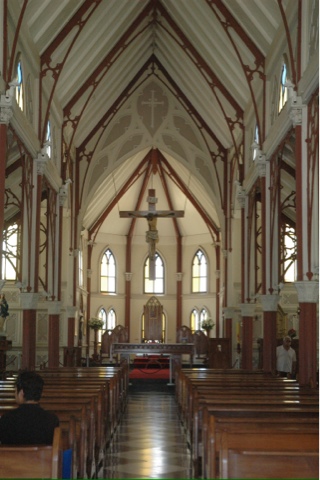Our last night shift and an early morning sighting of the Galapagos Islands. Those of you who got your atlas out will know the most westerly island is Isla San Cristobal. This is one of the inhabited islands and is the place where we will check into Galapagos, pay our park fee of $100.00 per person and get the information we need to organize ourselves for the next four weeks.
Our wind died completely last evening so we have had to motor again. And I spoke too soon about our fishing. Just as we were serving dessert, we caught a lovely big tuna. Enough for a couple of meals at least. And it bit on our shiny new lure while we were under sail traveling at about 4 knots per hour. A nice surprise for sure.
The sun rose in the east, a beautiful sky and an almost perfectly flat sea and looking West we could see the first sight of land. As we got closer, seals and sea lions come by and pop their heads out of the water to see us. Ah, Galapagos. I hope it is everything I dreamed of.
Thursday, February 28, 2013
Wednesday, February 27, 2013
Third and Fourth Days at Sea
Water all around us, clear skies, calm seas and light winds. It has been an uneventful trip thus far. So uneventful that we haven't even caught a fish yet. We have had zero activity on the lines, no nibbles, no lost lures, nothing at all. We even changed out one of our lures thinking a new shiny lure might just do the trick. We had counted on some fish for dinners along the way and also to stock our freezer before we get to the national park where fishing is not permitted. This is the first time we have been without catching a fish for four days running.
We are all reading up on The Galapagos in our Lonely Planet guides and of course the very handy and informative document prepared by the crew of S/V Soggy Paws that we downloaded from the Internet. It looks like we will have lots to see. The Galapagos is made up of 13 large islands, six small islands and many small islets at the equator approximately 600 nautical miles off the coast of Ecuador.
During the past two days the winds have been light and intermittent so we pulled in the sails and turned on the motor a couple of times. I know it's cheating, but we never said we were hard core sailors did we. And we need to charge our batteries so it is either running the generator to charge, or using the main engine which propels the boat and charges our batteries at the same time.
Even with the light wind, we are still on schedule to arrive tomorrow. We expect to reach San Cristobel around noon. Then we will make a plan for our stay, book a dive trip or two and decide which islands we want to explore first.
Only one more night shift to do. By morning land should be visible on the horizon. Almost there.
We are all reading up on The Galapagos in our Lonely Planet guides and of course the very handy and informative document prepared by the crew of S/V Soggy Paws that we downloaded from the Internet. It looks like we will have lots to see. The Galapagos is made up of 13 large islands, six small islands and many small islets at the equator approximately 600 nautical miles off the coast of Ecuador.
During the past two days the winds have been light and intermittent so we pulled in the sails and turned on the motor a couple of times. I know it's cheating, but we never said we were hard core sailors did we. And we need to charge our batteries so it is either running the generator to charge, or using the main engine which propels the boat and charges our batteries at the same time.
Even with the light wind, we are still on schedule to arrive tomorrow. We expect to reach San Cristobel around noon. Then we will make a plan for our stay, book a dive trip or two and decide which islands we want to explore first.
Only one more night shift to do. By morning land should be visible on the horizon. Almost there.
Second Day at Sea
It was an uneventful first night. SEGWUN is in her element and all of Jens' promise of the Pacific Ocean being a more passive sea seem to be holding true. After our rough start in the Caribbean back in January 2012 where we were sailing against the waves in fairly rough seas, I wasn't sure I would be able to handle a long sea journey. But here we are! And so far, so good, fingers crossed, knock wood and all the stuff.
We have had mild winds ranging from 5 knots to 12.5 knots over the past 24 hours. The swells have been large, but widely spaced making for a less rocky boat. It is easier to sleep and move about the cabin when it is like this making it much more relaxed. We pass the time playing cards and backgammon, reading, fishing, watching tv shows and movies and for me, writing the blog.
We have a full moon again tonight making it quite bright throughout the night. The moon rose before the sun set and went down about an hour before the sun rose, just long enough to see the millions of stars above.
It has been a great start to this trip. At this rate of speed, we expect to get to Galapagos in four and a half days.
We have had mild winds ranging from 5 knots to 12.5 knots over the past 24 hours. The swells have been large, but widely spaced making for a less rocky boat. It is easier to sleep and move about the cabin when it is like this making it much more relaxed. We pass the time playing cards and backgammon, reading, fishing, watching tv shows and movies and for me, writing the blog.
We have a full moon again tonight making it quite bright throughout the night. The moon rose before the sun set and went down about an hour before the sun rose, just long enough to see the millions of stars above.
It has been a great start to this trip. At this rate of speed, we expect to get to Galapagos in four and a half days.
First Day at Sea
As I stare out at the sea watching the small waves catching the sun making the ocean glisten and sparkle, my mind wanders back to the snow covered hill at the cottage in Muskoka where there too the sun was glistening and sparkling off the pure, white snow. A special moment with my Dad as we made our way through two feet of untouched snow down to the cottage, the air crisp and cold in our nostrils, the sun warm on our faces. The trees looked decorated with snow, every branch with a bit of snow icing on the top. The smaller bushes had little clumps of snow stuck in the corners of the twigs, giving the appearance of little fluffs of cotton hung in midair. The sky was the bluest blue, the kind you only see on a cold winter day.
It is our watch, Christian and I, on our first day at sea. We take six hour watches in teams of two. We have the 2 till 8 watch, which means that Anna and Jens will take the 8 till 2 watch. During our six hour watch, we decide between us who wants to or needs to sleep for an hour or two. But sleeping or not, you have to be ready to step in, so that usually means napping in the cockpit rather than down below. Right now, Anna and Jens are down below, getting some sleep before dinner and the start of their shift at eight. Christian is in the cockpit napping in the late afternoon sun. And I am behind the helm.
It's a peaceful first day out. SEGWUN has been in port for too long. We arrived to Ecuador in late November, so it is high time we set back out to sea. The wind is on our nose, but we expect it to be coming from a southerly direction as we move further from the coast making our way westward. The sea is calm today and so far we have seen several large turtles floating along, a few ships passing in the distance and a lot of small fishing boats appearing on the top of the swells. The land slowly slips out of sight on the horizon behind us.
Sure enough, the wind shifts and picks up a little. We reacquaint ourselves with the rigging for the sails and as soon as the wind picks up enough, we turn off the engine and raise the genoa and the main sail. We have less speed now, running at about 4 knots per hour compared to the 5.7 when motoring, but it is also nice and quiet. We are on our way to Galapagos.
It is our watch, Christian and I, on our first day at sea. We take six hour watches in teams of two. We have the 2 till 8 watch, which means that Anna and Jens will take the 8 till 2 watch. During our six hour watch, we decide between us who wants to or needs to sleep for an hour or two. But sleeping or not, you have to be ready to step in, so that usually means napping in the cockpit rather than down below. Right now, Anna and Jens are down below, getting some sleep before dinner and the start of their shift at eight. Christian is in the cockpit napping in the late afternoon sun. And I am behind the helm.
It's a peaceful first day out. SEGWUN has been in port for too long. We arrived to Ecuador in late November, so it is high time we set back out to sea. The wind is on our nose, but we expect it to be coming from a southerly direction as we move further from the coast making our way westward. The sea is calm today and so far we have seen several large turtles floating along, a few ships passing in the distance and a lot of small fishing boats appearing on the top of the swells. The land slowly slips out of sight on the horizon behind us.
Sure enough, the wind shifts and picks up a little. We reacquaint ourselves with the rigging for the sails and as soon as the wind picks up enough, we turn off the engine and raise the genoa and the main sail. We have less speed now, running at about 4 knots per hour compared to the 5.7 when motoring, but it is also nice and quiet. We are on our way to Galapagos.
Friday, February 22, 2013
Back to SY SEGWUN: Provisioning and a Few Surprises
After a short hiatus we are all back to the boat and are preparing for our onward journey. Anna and Christian are back from their adventures having travelled much the same route as us through Ecuador, Peru and Bolivia, but with some very different experiences. They travel backpacker class whereas we travel poor tourist class / rich backpacker class. And I am happy to say they are a little more adventurous than we are. Example: six days hiking through the jungle. Yes, hiking as in slashing your way through, sleeping in lean - to's, etc. It's always fun when we get back together and share our stories. Christian and Anna are working on some new videos and when they get posted, I'll be sure to share the link.
As for us, you have already read about our land trips the last few months. After our Colca Canyon trek, we made a quick decision to fly to Canada for a visit. My Dad had been I'll in hospital and although he was on the mend, it got me feeling very homesick and I just needed to get back for a bit. So we cleaned out my Aeroplan miles account and flew from Arequipa to Toronto via Lima and Houston. Our timing was such that we ran into the winter storm that hit the East Coast on Friday and we experienced the flight cancellations and delays. Because it was a last minute booking on points, Jens and I were on different flights from Houston. His flight was ok, mine was cancelled; so after standing by overnight I finally limped home on Saturday morning.
We had some really nice visits and got to see most of the family. But the time was just too short to see everyone. I made a quick trip up to the cottage for a look see. Everything is fine there, lots of nice white snow making it look like a winter wonderland.
And after enjoying some -10 degrees weather, we are back to hot and humid +30 degrees. Jens arrived to a couple of bad surprises. The boat batteries were fried. I can't give you the technical explanation of how or why it happened but suffice it to say, new batteries were ordered and installed (~$800.00). And lo and behold, it seems the MacBook Pro is not a pro at sailing. We had left it behind, safely stowed and tucked away while we were off touring. Only to get back and find that once again we have problems. This time it just refuses to start. Even with a new power adapter ($85.00), there is no life in that baby. I spent a day researching on the internet and joining chat groups hoping for a solution, all to no avail. Thank heavens for my reliable first generation iPad. I guess it will have to step up one more time and do all the work.
The Captain's list is now completed. The bottom of the boat is cleaned, the hull is polished, the fuel tanks are full and the fridge and freezer are almost full. We'll make one more trip to the grocery store today and then we are ready to go.
We will leave Saturday morning making our way across the Pacific to the Galapagos Islands, about 600 nautical miles. We have our paperwork in hand (no small feat there as we have been organizing our cruising permit for Galapagos since last October) and are all excited about what we will find when we get there.
As for us, you have already read about our land trips the last few months. After our Colca Canyon trek, we made a quick decision to fly to Canada for a visit. My Dad had been I'll in hospital and although he was on the mend, it got me feeling very homesick and I just needed to get back for a bit. So we cleaned out my Aeroplan miles account and flew from Arequipa to Toronto via Lima and Houston. Our timing was such that we ran into the winter storm that hit the East Coast on Friday and we experienced the flight cancellations and delays. Because it was a last minute booking on points, Jens and I were on different flights from Houston. His flight was ok, mine was cancelled; so after standing by overnight I finally limped home on Saturday morning.
We had some really nice visits and got to see most of the family. But the time was just too short to see everyone. I made a quick trip up to the cottage for a look see. Everything is fine there, lots of nice white snow making it look like a winter wonderland.
And after enjoying some -10 degrees weather, we are back to hot and humid +30 degrees. Jens arrived to a couple of bad surprises. The boat batteries were fried. I can't give you the technical explanation of how or why it happened but suffice it to say, new batteries were ordered and installed (~$800.00). And lo and behold, it seems the MacBook Pro is not a pro at sailing. We had left it behind, safely stowed and tucked away while we were off touring. Only to get back and find that once again we have problems. This time it just refuses to start. Even with a new power adapter ($85.00), there is no life in that baby. I spent a day researching on the internet and joining chat groups hoping for a solution, all to no avail. Thank heavens for my reliable first generation iPad. I guess it will have to step up one more time and do all the work.
The Captain's list is now completed. The bottom of the boat is cleaned, the hull is polished, the fuel tanks are full and the fridge and freezer are almost full. We'll make one more trip to the grocery store today and then we are ready to go.
We will leave Saturday morning making our way across the Pacific to the Galapagos Islands, about 600 nautical miles. We have our paperwork in hand (no small feat there as we have been organizing our cruising permit for Galapagos since last October) and are all excited about what we will find when we get there.
Friday, February 8, 2013
The Search for Condors
We left the hostel in Arequipa, Peru at 00:30 taking a taxi to the bus station to take the 01:00 bus to the Colca canyon. It is a 5 hour bus ride and this bus is used mostly by locals. To my surprise, every seat was filled. We were headed to the town of Cabanaconde to start our trek into the Colca canyon and our search for Comdors.
The Cañon Del Colca is the world's second deepest canyon at 3,501 meters and twice as deep as the Grand Canyon in the USA. It is home to the magnificent Condor, is flanked by the two highest volcanoes in Peru and has an abundance of flora as we passed through several zones from high altitude desert type terrain to the oasis at the bottom with palm and fruit trees.
The first day we trekked downhill to the Colca river spotting eagles; and to Jens' great delight, the Condor flying high above us. Three and a half hours of walking downhill and you can imagine that our knees were starting to complain a little. We reached the Colca river and took a short rest before crossing. The river at this time of year is rushing madly with the water from the daily rain fall. This is the rainy season and lucky for us, the mornings are usually bright and sunny. The clouds start forming midday and the rain starts late afternoons and into the night.
After crossing the river we walked through some ancient terraces along the river for a short way, passing by small fields of corn, potatoes, apple trees and avocado trees. Then it was another climb up to the villages which are strung along the side of the mountain. Our first stop was at the small village of Cosñirhua for a late lunch and a short nap. The villages in the valley didnt have electricity until three years ago and still live a very basic life. The hostel we stayed at actually had mud floors. Not much in the way of luxury here, marginally better than a tent. We had to move the bed to avoid getting dripped on when the rain started. Thank goodness it was only for one night.
Malata, the next village on the trail, was having a celebration and we headed over to have a look. We had heard the music as we were trekking down the canyon and were really curious to see what it was all about. Our guide, Johslem, told us it was a seven day festival. The story goes like this: Many, many years ago there was a villager that fell in love with a princess from another village. The only way he could get past her guards to see her was to dress up as a woman, and as he approached the gate, he would start dancing to distract them. He made it through, stole the princess and brought her back to his village. Well, they soon found him and killed him for his crime. So now, every year, the men in the village dress up as women and dance around the square. The music plays from morning to night and the whole village and neighboring villagers come out dressed in their finest. The beer is flowing, the food is being served and the music plays on, and on and on. They play the same song continuously. Seriously, the same song.
As the afternoon rain started we headed back to our village for dinner and a little sleep. The next morning early we had a guided tour of the owners garden. We sampled oranges, mandarins, sweet Peruvian lemons, cactus fruit and apples. It was just amazing to see what they can grow in this canyon. It is somewhat of a microclimate created by the steep mountains on both sides.
After breakfast we continued our journey to the oasis. This was a fairly easy walk of about four hours. The hostels at the oasis have beautiful swimming pools, palm trees and great mountain views. We had a lazy afternoon swimming, sunbathing and watching the condors soaring overhead. The rain came down hard that afternoon and continued through most of the night. It was accompanied by lots of lightening and incredible thunder rolling through the canyon. It rained so much that we heard several landslides throughout the night.
We were up and ready to start the 1km vertical climb at 4 am. With our headlamps on we climbed the trail, passing several places where the rocks had given way and blocked the path. We got to the top at 7:30 and walked to the village for breakfast. Oh it felt so good to sip that coffee and eat a little bread and jam. We had been told the Colca Canyon trek was more difficult than the Inca Trail. I don't know if it's because we are in better shape now, but we both found the Inca trail to be much harder, particularly Dead Woman's Pass.
The Cañon Del Colca is the world's second deepest canyon at 3,501 meters and twice as deep as the Grand Canyon in the USA. It is home to the magnificent Condor, is flanked by the two highest volcanoes in Peru and has an abundance of flora as we passed through several zones from high altitude desert type terrain to the oasis at the bottom with palm and fruit trees.
The first day we trekked downhill to the Colca river spotting eagles; and to Jens' great delight, the Condor flying high above us. Three and a half hours of walking downhill and you can imagine that our knees were starting to complain a little. We reached the Colca river and took a short rest before crossing. The river at this time of year is rushing madly with the water from the daily rain fall. This is the rainy season and lucky for us, the mornings are usually bright and sunny. The clouds start forming midday and the rain starts late afternoons and into the night.
After crossing the river we walked through some ancient terraces along the river for a short way, passing by small fields of corn, potatoes, apple trees and avocado trees. Then it was another climb up to the villages which are strung along the side of the mountain. Our first stop was at the small village of Cosñirhua for a late lunch and a short nap. The villages in the valley didnt have electricity until three years ago and still live a very basic life. The hostel we stayed at actually had mud floors. Not much in the way of luxury here, marginally better than a tent. We had to move the bed to avoid getting dripped on when the rain started. Thank goodness it was only for one night.
Malata, the next village on the trail, was having a celebration and we headed over to have a look. We had heard the music as we were trekking down the canyon and were really curious to see what it was all about. Our guide, Johslem, told us it was a seven day festival. The story goes like this: Many, many years ago there was a villager that fell in love with a princess from another village. The only way he could get past her guards to see her was to dress up as a woman, and as he approached the gate, he would start dancing to distract them. He made it through, stole the princess and brought her back to his village. Well, they soon found him and killed him for his crime. So now, every year, the men in the village dress up as women and dance around the square. The music plays from morning to night and the whole village and neighboring villagers come out dressed in their finest. The beer is flowing, the food is being served and the music plays on, and on and on. They play the same song continuously. Seriously, the same song.
As the afternoon rain started we headed back to our village for dinner and a little sleep. The next morning early we had a guided tour of the owners garden. We sampled oranges, mandarins, sweet Peruvian lemons, cactus fruit and apples. It was just amazing to see what they can grow in this canyon. It is somewhat of a microclimate created by the steep mountains on both sides.
After breakfast we continued our journey to the oasis. This was a fairly easy walk of about four hours. The hostels at the oasis have beautiful swimming pools, palm trees and great mountain views. We had a lazy afternoon swimming, sunbathing and watching the condors soaring overhead. The rain came down hard that afternoon and continued through most of the night. It was accompanied by lots of lightening and incredible thunder rolling through the canyon. It rained so much that we heard several landslides throughout the night.
We were up and ready to start the 1km vertical climb at 4 am. With our headlamps on we climbed the trail, passing several places where the rocks had given way and blocked the path. We got to the top at 7:30 and walked to the village for breakfast. Oh it felt so good to sip that coffee and eat a little bread and jam. We had been told the Colca Canyon trek was more difficult than the Inca Trail. I don't know if it's because we are in better shape now, but we both found the Inca trail to be much harder, particularly Dead Woman's Pass.
Saturday, February 2, 2013
And now we are back to Peru
An overnight bus to Arica, a day walking around town and a good nights sleep; and another two buses to Arequipa, Peru. Buses in this part of the world are incredibly efficient and quite inexpensive.
During our walk in Arica we came upon a church built by Eiffel, the same guy who built the Eiffel tower. Imagine that. A church built of steel out here in the desert. According to Wiki the church was prefabricated in France, sent to Chile unassembled and put together on site. He did this with many other churches and bridges sending them around the world to places where materials were hard to get, where roads were not in good condition and where skilled labour was not available. Was this where IKEA got their idea from?
We boarded a bus in Arica which took us across the border - first going through the process of exiting Chile and entering Peru (everybody off the bus and in line to get our exit stamps, on the bus, drive 500 meters to the Peru border, everybody off the bus, grab your luggage and into line for entry to Peru, security check of luggage and back on the bus.). The first stop is Tacna where we have to cross the street to domestic terminal and find a bus to Arequipa.
We had time for breakfast at the bus station and breakfast in this part of the world is typically a big bowl of soup. Chicken soup complete with a leg of chicken (I was glad it wasn't feet as this is quite common), a chicken egg, four small eggs (either quail or pigeon, I'm not sure), potato and noodles. It tastes quite good and is a nice change from stale buns that the hostels like to serve.
Seven hours in the bus through the desert and we arrived to Arequipa, a beautiful colonial town in the valley. We'll use this as our hub for the next couple of weeks.
During our walk in Arica we came upon a church built by Eiffel, the same guy who built the Eiffel tower. Imagine that. A church built of steel out here in the desert. According to Wiki the church was prefabricated in France, sent to Chile unassembled and put together on site. He did this with many other churches and bridges sending them around the world to places where materials were hard to get, where roads were not in good condition and where skilled labour was not available. Was this where IKEA got their idea from?
We boarded a bus in Arica which took us across the border - first going through the process of exiting Chile and entering Peru (everybody off the bus and in line to get our exit stamps, on the bus, drive 500 meters to the Peru border, everybody off the bus, grab your luggage and into line for entry to Peru, security check of luggage and back on the bus.). The first stop is Tacna where we have to cross the street to domestic terminal and find a bus to Arequipa.
We had time for breakfast at the bus station and breakfast in this part of the world is typically a big bowl of soup. Chicken soup complete with a leg of chicken (I was glad it wasn't feet as this is quite common), a chicken egg, four small eggs (either quail or pigeon, I'm not sure), potato and noodles. It tastes quite good and is a nice change from stale buns that the hostels like to serve.
Seven hours in the bus through the desert and we arrived to Arequipa, a beautiful colonial town in the valley. We'll use this as our hub for the next couple of weeks.
Subscribe to:
Posts (Atom)

